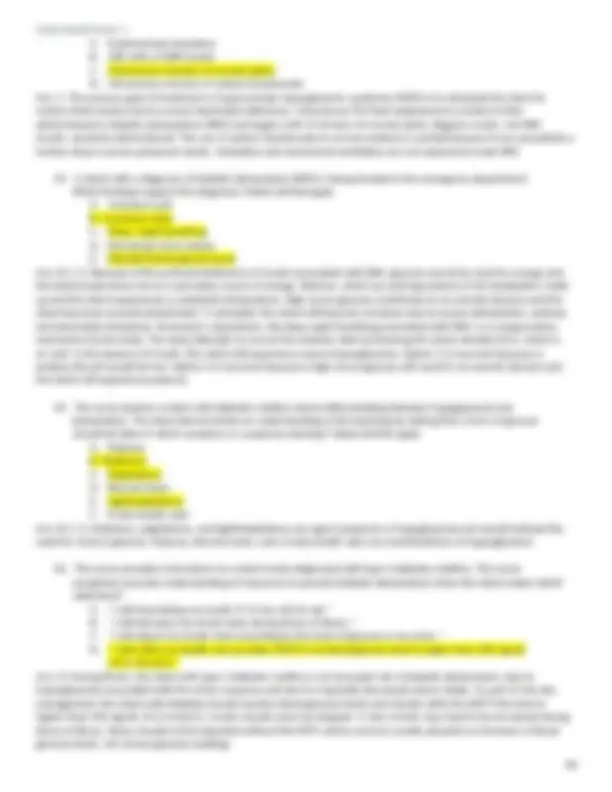



















































































Study with the several resources on Docsity

Earn points by helping other students or get them with a premium plan


Prepare for your exams
Study with the several resources on Docsity

Earn points to download
Earn points by helping other students or get them with a premium plan
Community
Ask the community for help and clear up your study doubts
Discover the best universities in your country according to Docsity users
Free resources
Download our free guides on studying techniques, anxiety management strategies, and thesis advice from Docsity tutors
Adult Health Exam 1-Fluid & Electrolyte Balance, Acid-Base Balance, Care of the Older Adult, Diabetes/Hypoglycemia, Ethical Reasoning, Skin Integrity & Burns, Acute Pain, & Perioperative Care Review Questions & Answers
Typology: Exams
1 / 89

This page cannot be seen from the preview
Don't miss anything!


















































































Fluid & Electrolyte Balance
C. A urine output that is pale yellow D. A blood pressure of 120/80 mm Hg Ans: B. The client who is dehydrated will have a urine specific gravity greater than 1.030. Normal values for urine specific gravity are 1.005 to 1.030. A temperature of 98.8°F (37.1°C) is only 0.2 point above the normal temperature and would not be as specific an indicator of hydration status as the urine specific gravity. Pale yellow urine is a normal finding. A blood pressure of 120/80 mm Hg is within normal range.
D. Phosphorus level of 2.
Ans: C. Hypokalemia (normal potassium levels are 3.5 to 5.1) will present with these type of EKG findings.
3 occurs in conditions resulting in hypovolemia, the loss of gastric fluid, excessive bicarbonate intake, the massive transfusion of whole blood, and hyperaldosteronism. Loss of gastric fluid via nasogastric suction or vomiting causes metabolic alkalosis as a result of the loss of hydrochloric acid. The remaining options are incorrect interpretations.
D. Phosphorus level of 3.0 mg/dL (0.97 mmol/L) Ans: B. Respiratory alkalosis is defined as a deficit of carbonic acid or a decrease in hydrogen ion concentration that results from the accumulation of base or from a loss of acid without a comparable loss of base in the body fluids. This occurs in conditions that cause overstimulation of the respiratory system. Clinical manifestations of respiratory alkalosis include lethargy, lightheadedness, confusion, tachycardia, dysrhythmias related to hypokalemia, nausea, vomiting, epigastric pain, and numbness and tingling of the extremities. All three incorrect options identify normal laboratory values. The correct option identifies the presence of hypokalemia.